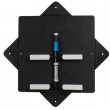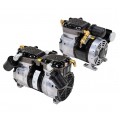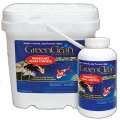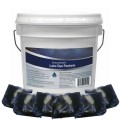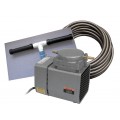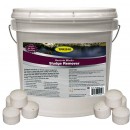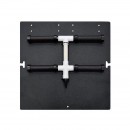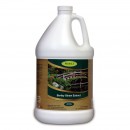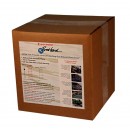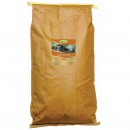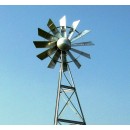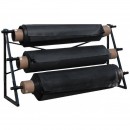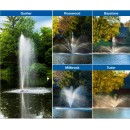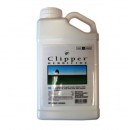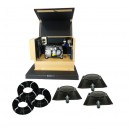Your shopping cart is empty!
Categories
- Pond Sealant
- Aeration Systems
- Air Pumps & Compressors
- Algae Control
- Algaecides & Herbicides
- Bacteria & Clarifiers
- DC Compressors & 12V Pumps
- Diffusers & Airstones
- Dock Bubblers & Deicers
- Dyes & Colorants
- Fountains
- Large Ponds & Lakes
- Muck Removal
- Pond Liner
- Slide Gates & Water Control
- Tubing & Accessories
- Water Treatments
- Windmill Aeration
- Commercial & Industrial Supplies
- Solar Aeration
-
Information & Articles
- - Aeration: The Key To Success
- - Air Compressors: Rotary Vane
- - Air Pumps: Linear or Diaphragm
- - Airline & Tubing for Aeration Systems
- - Algae Control
- - Aquatic Plants & Weeds in Ponds
- - Building A Dock Bubbler System
- - Building A Pond: The Basic Steps
- - Calculating Dissolved Oxygen Levels
- - Compost Aeration & Compost Tea
- - Diffusers: The Key To Efficient Aeration
- - Dock Bubblers & Deicers
- - Duckweed Control
- - Fountain For Ponds, Lakes & Small Gardens
- - Grease Trap Bacteria & Enzymes
- - Mosquito Control in Ponds
- - Muck: Removing Sludge & Pond Muck
- - Pond Aeration Systems
- - Pond Dyes: Aesthetics & Growth Control
- - Pond Liners
- - Pond Pumps: Submersible & External
- - Pond Winterization: Prepare Your Pond for Winter
- - Septic Bacteria Treatments
- - Solar Aeration, Solar Pumps & Solar Systems
- - Solar Aerator Parts List
- - Solar DC & 12V Pumps
- - Weeds & Eurasian Milfoil
- - Windmill Aeration & Windmill Pumping
- - Winterization of Ponds and Lakes
- - Beneficial Bacteria: Helping A Pond Naturally
- - Algae: Basics of Pond Algae
- - Oxygen Transfer Rates, SOTR & Pumping Rates of Aeration Systems
- - Pond Weed & Algae Control
- - Questions & Answers
- - Waterfalls: Building a Waterfall
- - Weighted Airhose, Airline & Tubing for Ponds
- - Links to Suppliers & References
- Consultations & Design Assistance
- Books & Guides
- Links & Resources
Calculating Dissolved Oxygen Levels

|
Understanding the rate of oxygen transfer a diffuser can deliver Whenever the question of installing an aeration system comes up I am inevitably asked how much oxygen will be delivered by the aerator. Of course this is a standard question because the amount of oxygen being delivered in to the water is critical if there are fish in the pond or if it is an aquaculture system with a certain number of pounds of fish per tank or per square meter. Each diffuser has a different transfer of oxygen level and if we are installing diffuser discs with medium sized bubbles or are using airstones with micro-bubble sizes that are less that 1 mm per bubble then it can make a huge difference.
Let's take an example that even my Uncle Jimmy could understand: Jimmy has a 4 acre pond and is thinking of adding a 3/4 HP rotary vane compressor with 4 airstone diffusers and I think that it would likely be fine considering he has a few deep sections near the dam that are at least 8 feet deep. I have to say to Jimmy: "I'm no scientist but let's put this formula in the form of a chart so you can dwell and swell over the numbers! No Jimmy...I ain't calling you out...but if you can understand this chart then I owe you fifty bucks!" For the creatures of the Earth that inhale and breathe air a level of oxygen that is around 21 percent is required to support life but in ponds, lakes and aquaculture waters aquatic life is often supported in water that contains less than 0.0001 percent oxygen, which is equal to 10 mg/l. With such a small amount available in even the best of aquatic ecosystems it is understandable why every aquculturist, serious koi or gold fish owner, or even anyone interested in maintaining a fish pond or a healthy water body should understand, measure and record the various seasonal changes of the dissolved oxygen to ensure fish health and pond clarity. If the oxygen level is too low, get yourself a pond aerator if this is the case, your fish may stop eating and become lethargic and will expend extra and unavailable energy trying to find their food...but at the same time if the oxygen levels are too high then it can also be a catastrophic fish-kill. At both extremes there can be extreme fish stress and even death to aquatic life if the O2 levels surpass critical thresholds. Using a dissolved oxygen meter will allow you to regulate and understand how your pond is evolving and when changes need to be made to adjust the pH, temperature or aeration efficiency of your system you will be able to quickly react! I always tell the municipal lake-managers, pond owners and the homeowner associations that I work for that they must take ownership and responsibility of their pond or lake. It is the same with the small backyard fishpond! The daily 24-hour cycle, sometimes called the diurnal cycle, of oxygen addition and reduction in a pond should be well understood because as you probably already know there is a delicate and fragile balance between the existing dissolved oxygen in any pond or lake or water-garden versus the absolute rate of oxygen consumption and this fluctuating level can be altered by the shifting algae growth cycles, temperatures and even the prevailing wind directions! In your outdoor ponds there will be lower dissolved oxygen levels in the height of the summer months, during June, July & August especially because during the warmer months the overall rate of oxygen consumption in the pond will increase as temperature increases. This is why the most important thing to monitor will be the oxygen level. The combination of monitoring your oxygen as well as other chemical and elemental parameters of your pond combined with accurate record-keeping will provide extremely useful and predictive knowledge for the years to come as you deal with changing environmental systems and patterns.
If you want to really get technical then the bottom line is that it takes way more than just bubbles to correctly aerate a pond or lake. When the oxygen levels are low you should be able to expect a transfer performance of up to 10 pounds of dissolved oxygen per HP per hour, this is using the standard rate so coveted by engineers! Most pumps, water moving fountains and air bubblers are actually rated at less than 2 pounds per horse power per hour. But as we have found these ratings are often inaccurate because most O2 transfer happens at the surface and not in the mechanical mixing or aerating. Bubbles from diffusers tend to expand and spread out as they rise from the bottom to the surface. The volcanic like mounting of water that is pulled within the bubbles from one of our synergistic diffusers rise at a rate that averages about one foot per second moving around 2,000 gallons per minute from the area above the diffuser assembly. In comparison, a simple PVC pipe drilled with 1/64" holes will only move 200 gallons per minute on average with the same 1/3 HP piston compressor that delivers 3 CFM! Email us with your questions
For efficient oxygen transfer use diffusers and airstones with high pumping rates and small bubbles
Recommendations for : For more information on pond aeration visit the following ten pond aeration websites. Please note that we are not specifically endorsing any particular way of treating ponds or any particular business. Due diligence in all things! 1. Water Quality - Calculating the percent saturation is another way to analyze dissolved oxygen levels. Percent saturation is the measured dissolved oxygen www.cotf.edu/ete/modules/waterq3/WQassess3f.html 2. Dissolved Oxygen and Water Quality - A good level of dissolved oxygen Is essential for aquatic life. ... As dissolved oxygen levels in water drop below 5.0 mg/l, aquatic life is put underwww.state.ky.us/nrepc/water/wcpdo.htm 3. Dissolved Oxygen and Nutrients - Key Findings Report - NREI - Aquatic animals need dissolved oxygen to survive. If levels of dissolved oxygen become too low, many types of fish and other animals could www.mb.ec.gc.ca/nature/ecosystems/nrei-iern/dg00s06.en.html 4. Major Findings - Dissolved Oxygen - Northern River Basin Study - Winter is a critical time for dissolved oxygen levels. ... Dissolved oxygen levels rarely dip below the Alberta surface water objective of 5 www3.gov.ab.ca/env/water/nrbs/sect3/sect38.html 5. Science Junction - Water What Ifs - Dissolved Oxygen Lessons - Decreases in the dissolved oxygen levels can cause changes in the ... Dissolved oxygen levels change and vary according to the time of day www.ncsu.edu/sciencejunction/depot/experiments/water/lessons/do/ 6. Canadian Water Quality Guidelines for the Protection of Aquatic - Dissolved oxygen levels in aquatic environments can. affect the persistence and bioavailability of some. chemicals. For example, the persistence in water of ceqg-rcqe.ccme.ca/download/en/178/ 7. Dissolved Oxygen Meters, Portable Meter - Cole-Parmer Catalog - METTLER TOLEDO's Dissolved Oxygen Sensors to monitor your processes.- Dissolved oxygen meters are analytical instruments that are used to measure the amount of oxygen dissolved in a liquid sample. www.coleparmer.com/Catalog/product_index.asp?cls=46612 8. Hanna Instruments Dissolved Oxygen Meters - Meters for Laboratories · Meters for Schools & Colleges · Swimming Pools Spa's & Hot Tub Testing ... You are here: Hanna Catalogue > Dissolved Oxygen Meters www.hannainst.co.uk/acatalog/Dissolved_Oxygen_Meters.html 9. Pond and water garden test kits, test ammonia, pH, nitrites ... - Pond Test Kits testing pH, Salt, Dissolved Oxygen, Ammonia, Nitrites, Nitrates, & More ... They're made in the USA, Available meters are oxygen meters - Dissolved oxygen concentration in ponds fluctuates on a 24-hour basis. .... Dissolved oxygen can be monitored using an electronic oxygen meter or chemical www.pondsolutions.com/test-kits.htm 10. Pond Aeration For Healthy Koi Ponds - In smaller fish/ koi ponds aeration is usually achieved when water ... Although a bit pricey, a dissolved oxygen meter is one of the best - Dissolved Oxygen Meter - Waterproof pH tester - Salinity Meter ... The meter is extremely easy to use; simply turn it on and dip into your Koi pond - Disolved Oxygen Meter Dissolved oxygen metering is an important application test if efficiently maintaining koi ponds where oxygen levels are important to www.pondbiz.com/home/pb1/smartlist_323/h2o_test_kits__meters.html | ||||||||||||||||||||||||||||||||||||||||||||||||||||||||||||||||||||||||||||||||||||


 Dissolved Oxygen DO Meter Kit
Dissolved Oxygen DO Meter Kit Oakton Dissolved Oxygen Meter with Probe
Oakton Dissolved Oxygen Meter with Probe
